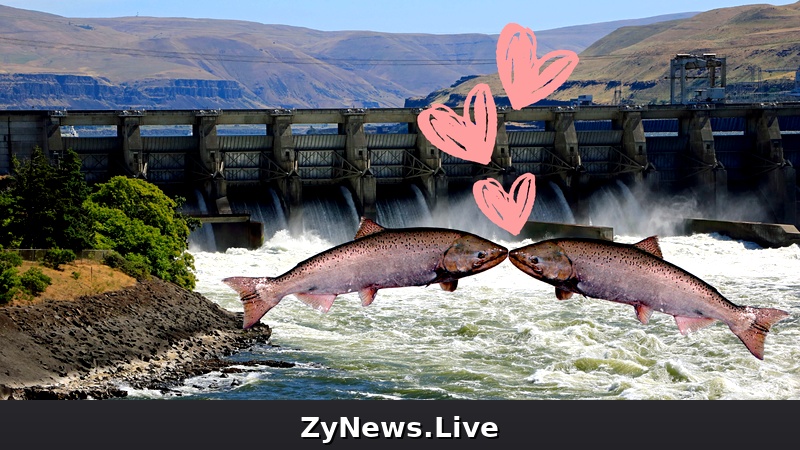4 Dams Demolished in Historic Removal Project, Now Salmon Are Coming Home

Local tribes near the Klamath River and its offshoots along the Oregon-California border have spent years trying to get rid of four hydroelectric dams. The dams were blocking the natural migration patterns of local salmon, preventing them from reaching their spawning grounds. After decades of fighting, the dams came down and within less than a year, the salmon returned.
The native tribes — including the Yurok, Karuk, and Klamath — used lawsuits and protests to make their case about how much environmental destruction these dams have caused, particularly for local salmon which have been dying off en masse since the dams were built between 1918 and 1962.
## Videos by VICE
The tribes’ years of tireless work and dedication to getting rid of dams that were doing way more harm than good finally paid off when, on October 2, 2023, the dams came down in what is now considered the largest dam removal project in US history.
The dams were generating power for a relatively small number of homes, they didn’t provide any irrigation, drinking water, or flood control. But they sure were destroying local salmon populations for a river that was at one point the third largest salmon-producing river on the West Coast.
With the dams torn down, suddenly more than 400 miles of river were opened up to the fish that once thrived there. After that, it was just a matter of waiting and seeing if all that hard work would pay off.
Long story short, it did, and much faster than anybody anticipated. Nine months after the dams came down, the salmon returned to their original spawning grounds.
Removal of the dams has also had some knock-on environmental effects like improving local water quality, lowering the frequency of toxic algae blooms, and lowering the overall temperature of the river by an average of 14 degrees Fahrenheit, which is a much healthier temperature for salmon.
Next up is identifying where the salmon like to hang out and nest to determine where there is a lack of habitable space so the tribes can start restoring problem areas. But that’s a problem for another day. For now, tribal leaders are just happy to have restored some life to their lands. It’s like the chairman of the Yurok Tribe, Joseph L. James, told the Associated Press: “Our salmon are coming home.”